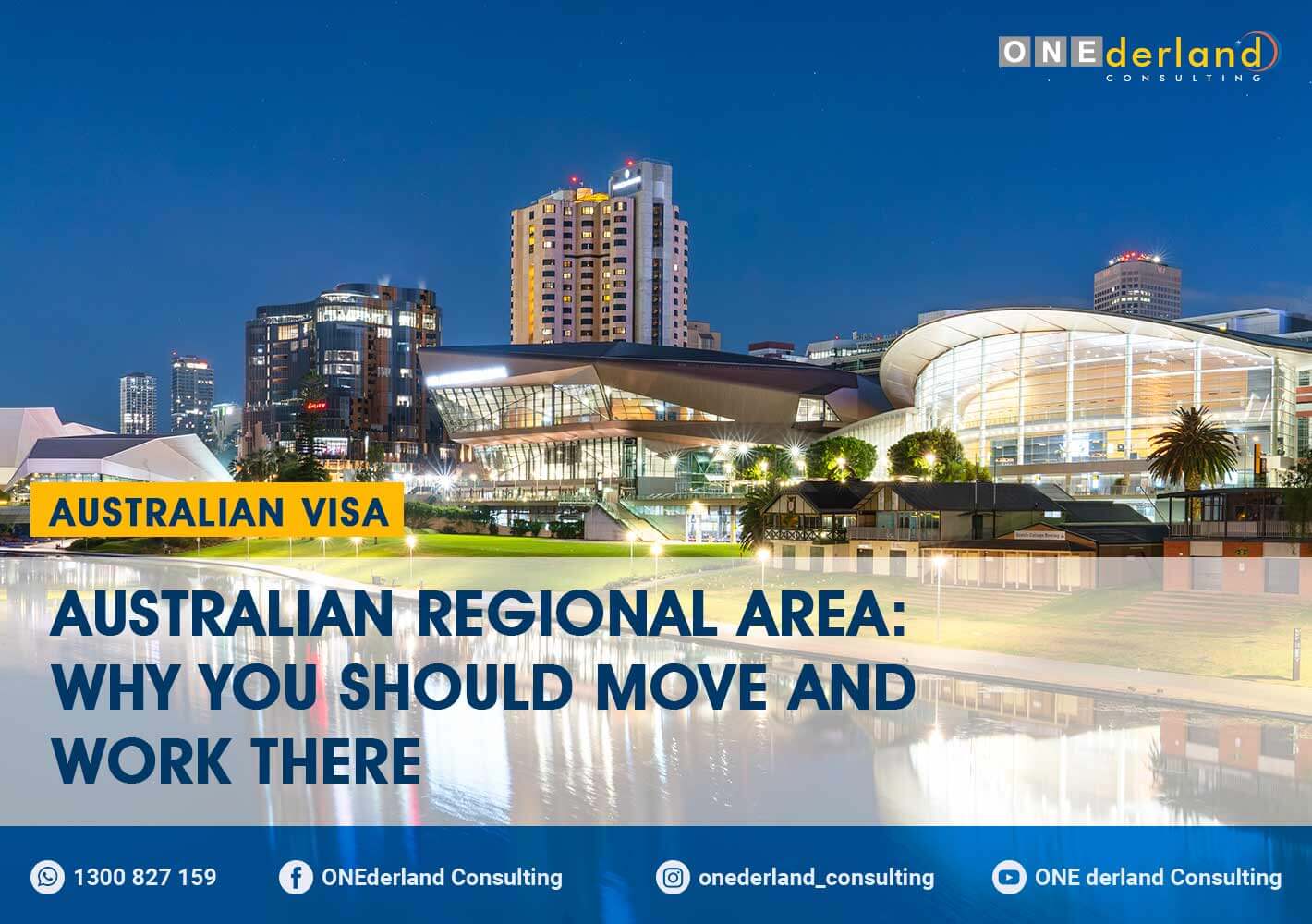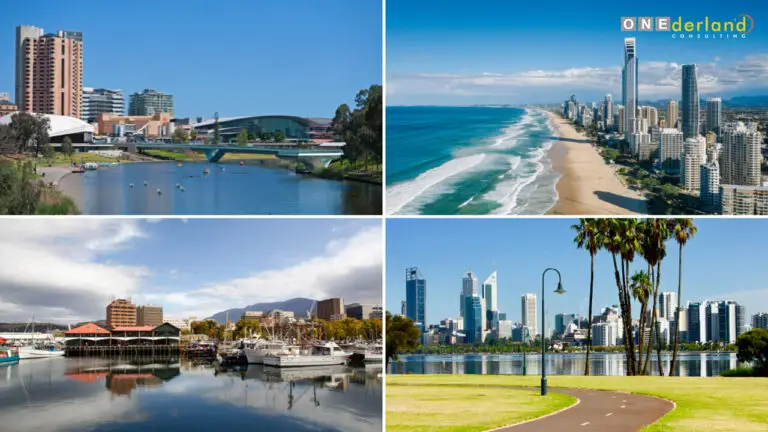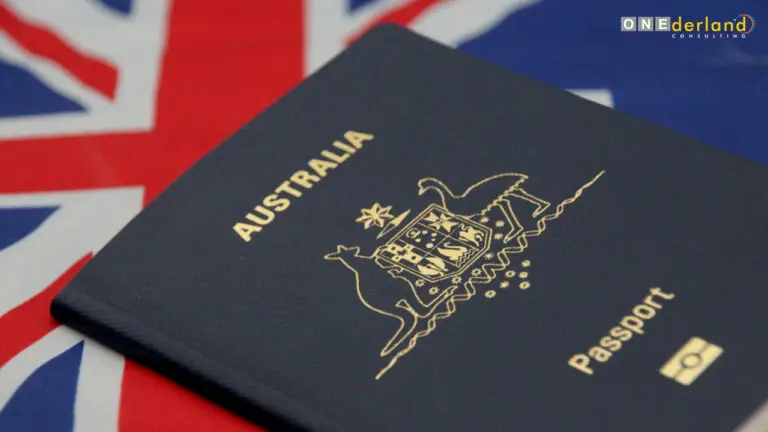Reason to Live and Work in Australian Regional Area – Complete Information
There are several reasons to stay, live, and work in Australian regional areas, which have been designated as well-established places which make them welcoming to migrants.
The designated regional areas are not isolated rural places. Compared to the main cities, regional areas have lower housing costs and offer a higher standard of living for the average wage earner.
ONE derland Consulting explains why you should consider staying, living, and working in Australian regional areas in details below.
How many cities in Australian Regional Areas?
These cities are included as Australian regional areas:
- New South Wales (NSW)
- Victoria
- Queensland
- Western Australia
- Northern Territory
- Gold Coast
- Sunshine coast
- Adelaide
- Cairns
- Tasmania
These will give you a different ambience from metropolitan cities that could give you a new sight of modern living overseas.
Why live and work in Australian Regional Areas?
Less living cost than the major cities
Regional areas give you more possibilities to have less living cost because the pricing rates are different from major cities in Australia such as Sydney, Melbourne and Brisbane.
Regional migrations also give you opportunities to get an employer to be your sponsor.
Tight-bond communities
Regional areas are welcoming many migrants, that means the place isn’t isolated from outsiders.
These could be your opportunities to know more about diversity and multicultural ambience.
Nature diversity at your fingertips!
Whenever you need the nature ambience, the variety of Australian landscape especially in regional areas will be your favorite benefits.
Wider of exciting job opportunities
You can apply for many kinds of job opportunities, which gives you many possibilities that everything you do will get paid–even if you are a postgraduate student in the country who wants to work in Australia.
Many visa options support this if you are nominated, or your workplace is in Australian regional areas.
How Many Regional Areas Are There In Australia?
Australia divided its designated regional areas into 2 categories. The classification is necessary for the purpose of applying for a Skilled Work Visa, specifically for designated regional areas:
Category 2 – ‘Cities and Major Regional Centres’ of Perth Adelaide, the Gold Coast, the Sunshine Coast, Canberra, Newcastle/Lake Macquarie, Wollongong/Illawarra, Geelong and Hobart.
These categories have any access to this regional incentive such as:
- Priority processing of regional visas
- Access to the Regional Occupations List – more jobs compared to non-regional lists
- International graduates with a bachelor or higher qualification from a regional campus of a registered institution will be eligible to access additional year in Australia on a post-study work visa
Category 3 – ‘Regional Centres and Other Regional Areas’
- access to the dedicated 11,200 regional places in Australia,
- priority processing of regional visas, and
- Regional Occupations List.
- Additional incentives:
- International graduates with a bachelor or higher qualification from a regional campus of registered institution will be eligible to access an additional 2 years in Australia on a post-study work visa.
- Priority in negotiating region-specific Designated Area Migration Agreements (DAMAs)
Read more: Designated regional areas
What are the Visa Options for Australian Regional Areas?
Based on these categories, several visas have been aimed explicitly at regional areas in Australia. The government already specified these visa-restricted work postcodes list including:
Regional visas:
- Skilled Work Regional (Provisional) Visa Subclass 491
- 494 Visa – Skilled Employer Sponsored Regional (Provisional) Subclass 494 ,
- Skilled Regional Sponsored Visa Subclass 489 – for visa holders who have granted after 16 November 2019.
Skilled visas:
Employer sponsored visas:
- RSMS 187 Visa – Regional Sponsored Migration Scheme Visa (Subclass 187) (currently only opens for the Temporary Residence Transition stream),
- 186 Visa – Employer Nominated Scheme Visa (ENS)
- TSS 482 Visa Australia – Temporary Skill Shortage Visa
Temporary graduate visa
Business investment visas
- Business Innovation and Investment (Permanent) visa (subclass 888)
- State/Territory Sponsored Business Owner visa (subclass 892)
For more information: Regional work visas
A friendly reminder, all of the visas listed above have their requirements and additional criteria for employer nomination in regional areas–as if you’re searching for working in specific fields.
- Additional 5 points (from 10 -15) under the Skilled Migration Points Test if nominated to live and work in a designated regional Australia.
- 5 points if the study is completed in a designated regional area and meets the Australian Study Requirement
Learn more: Visa 189 and Visa 190: Instant Australian Permanent Resident 2022
What is the best choice for live and work in Australia?
Prepare these things to know that you’ve the best choice live and work in Australian Regional Areas such as:
- Knows better the benefits of live and work in Australian Regional Areas
- Supporting Australian Regional Areas communities
- Learn more of any visas that includes Regional Areas as their specified locations
If you are in this condition, especially point 3, we are here to provide a professional agent who has mastered their fields.









